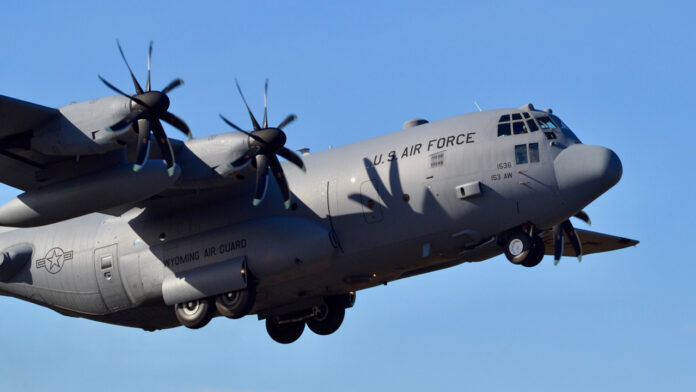
From cargo to refueling, troop transport to aerial firefighting, the venerable Lockheed Martin C-130 Hercules has been the workhorse of the military aviation world for decades, and upgrades provided by Collins Aerospace are helping to keep the C-130 fleet in the air.
After entering service with the U.S. Air Force in 1956, the C-130 was quickly adopted by other nations around the world. With approximately 1,000 C-130’s in service with U.S. operators and 1,100 internationally, it’s the longest continuously produced military aircraft at over 65 years and counting.
“There’s not a mission it can’t perform, the list goes on and on,” said Bill Curtin, senior manager of modifications and upgrades, customer and account Management for Collins Aerospace, said in a news release. “It’s so versatile that it’s become the go-to aircraft around the world.”
Even decades-old aircraft can continue performing for years to come thanks to retrofit modifications. Collins offers 21 different solutions to help operators modernize their current C-130 aircraft, including upgrades for wheels and brakes, propellers, avionics, seating, mission equipment, and ground systems and support. In addition to modifications and upgrades, Collins also provides long-term sustainment solutions to help customers streamline their MRO operations.
“We offer a range of capabilities across the aircraft, but we don’t expect customers to upgrade with all the options,” Mr. Curtin said. “Rather, we provide whatever combination meets their specific needs for enhanced performance, safety, fleet life extension and reliability/mission readiness. We can make recommendations as to what upgrades will be most beneficial and can be completed within the expected time frame.”
For example, Collins’ C-130 brakes can allow for up to 2,000 landings per overhaul, compared to 250 landings per overhaul experienced by operators of the C-130’s current system. That lifespan significantly reduces maintenance time and cost. In addition, Collins’ brakes are capable of handling higher energy than the aircraft’s existing equipment, which increases the safety margin when stopping heavily loaded C-130s.
Another upgrade is Collins’ NP2000 propeller system, which offers C-130 customers up to 50 percent estimated operational maintenance cost savings per flight hour compared to the legacy system.
“In addition, the 20 percent greater propeller takeoff thrust shortens heavyweight takeoff by approximately 300 meters, while the 55 percent estimated improvement in system reliability increases overall aircraft availability,” said Quinlan Lyte, senior director of propeller systems for Collins Aerospace. “With more than 1 million flight hours, the NP2000 is a proven solution in modernizing the C-130H while keeping costs down.”
Avionics upgrades have proven especially beneficial. 371 C-130 aircraft have been upgraded, or are on contract to be upgraded, with Collins’ Flight2 avionics solution. More legacy C-130 aircraft have been fitted with Collins’ avionics than any other single provider in the world.
“Flight2 not only meets forthcoming civil mandates, it replaces analog instruments so reliability is 15 times better, and reduces aircraft weight by a half a ton,” said Dave Schreck, vice president and general manager of Military Avionics and Helicopters for Collins Aerospace.
“Through all the upgrade capabilities we provide, customers can look at their budgets and work with Collins to find out what changes they can afford that will bring them the best bang for the buck,” Mr. Curtin added.




